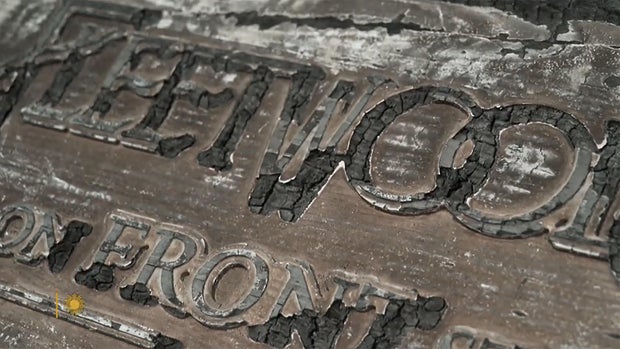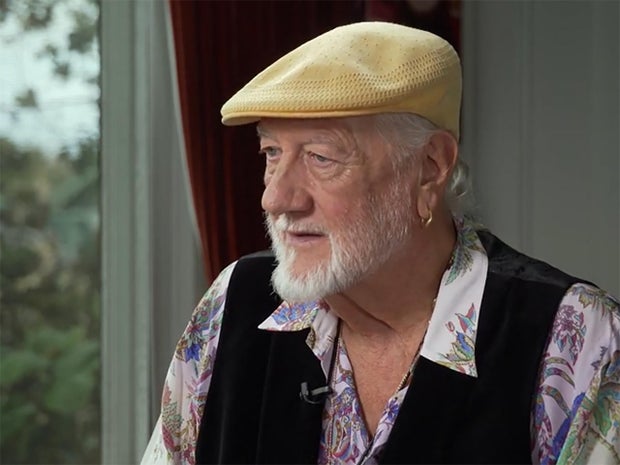CBS News
Credit card debt forgiveness dos and don’ts

Olga Yastremska, New Africa, Africa Studio / Getty Images
Credit card debt forgiveness has been a hot topic as of late. With the federal funds rate target frozen at a 23-year high, credit card interest rates have risen significantly in recent years. And since interest makes up a sizable portion of credit card minimum payments, many are dealing with higher monthly payments today than they were just a couple of years ago.
If you’re finding it more difficult to make your credit card payments each month, you may decide to reach out to a credit card debt forgiveness service. These services may be able to get meaningful portions of your credit card balances forgiven, reducing your payments and helping you regain solid financial footing.
However, as with any financial service, there are some dos and don’ts to consider before you sign up for a debt forgiveness program. Below, we’ll break down what to know before acting.
Find out how quickly debt forgiveness could help you pay off your credit cards now.
Credit card debt forgiveness dos and don’ts
Forgiveness programs can be a breath of fresh air if you feel like you’re drowning in credit card debt. However, you should consider the following dos and don’ts when you decide to reach out to a service provider.
Do: Contact a credit card debt forgiveness service if you’re struggling to make your minimum payments
Struggling to make your credit card payments can be difficult to deal with. But it’s important to realize that that you don’t have to struggle. If you’re torn between making your credit card payments or buying medication, clothing, food or other necessities, it’s time to reach out to a debt relief service to talk about debt forgiveness.
Tthe more you hesitate to get help, the more of a burden your credit card debt is likely to become. Moreover, too many missed payments could lead to escalating collections efforts, only adding to the stress of overwhelming credit card debt.
Don’t struggle to make your payments anymore. Contact a debt forgiveness professional now.
Don’t: Enroll in debt forgiveness if you don’t need it
Debt forgiveness programs are designed to help people who are living through financial hardship. Although they can provide significant relief from overwhelming credit card debt, they also usually come with consequences like a negative impact on credit scores and potential tax implications.
So, if you can make your minimum payments, but want a lower interest rate or faster payoff schedule, credit card debt forgiveness probably isn’t for you. Instead, consider reaching out to a debt management or debt consolidation provider for help.
Do: Make your payments as agreed
Once you start a debt settlement program, it’s vital that you make your payments as agreed. When you enroll in the program, you’ll likely work with a debt relief expert to determine an affordable payment plan. So, making your payments shouldn’t be too difficult. Nonetheless, the success of debt forgiveness programs largely depends on whether or not you stick to your end of the bargain. That means you’ll need to make a commitment to pay as agreed.
Don’t: Avoid your debt forgiveness service provider if you can’t afford your payments
Even if you have a significantly lower monthly payment in a debt forgiveness program than you did when you paid your credit card companies directly, you may fall on hard times. If conditions change and you can’t afford to make your payments, you should contact your debt forgiveness provider for two important reasons:
- A lower payment may be possible: Your debt forgiveness provider may be able to work with you to further decrease your minimum payments and continue to help you get out of debt.
- The money you’ve paid is yours: The money a debt forgiveness company holds aside for you as you await a settlement is your money. If you can’t make your payments, and have decided that bankruptcy is your best option, you can cancel with your debt forgiveness provider and receive all the money you saved, minus any fees the debt forgiveness company legally earned. In doing so, you may have access to the money you’ll need to pay for your bankruptcy.
Do: Change your spending habits
Settling your debts for less than what you owe and getting the remaining balances forgiven is only half the battle. It’s important to work to change your spending habits as you make your way through the debt forgiveness program to ensure that you don’t fall back into the credit card debt trap. This will likely involve cutting your expenses.
“A quick way to find expenses to cut,” explains Kristopher Whipple, partner and financial advisor at Kristopher Curtis Financial, “is to make a list of all the expenses that are required expenses – rent/mortgage/car payment/health insurance – and a list of non-required expenses – coffee/eating out/entertainment/cable/streaming services. By making these lists with the expense of each, you will easily see how quickly you can start picking which things can go and which things could stay.”
But, you don’t have to go to the extreme to change your spending habits. Whipple says, to have fun, too. “But,” he says, “instead of paying $7 for an orange mocha frappuccino on the regular basis, maybe find a way to make delicious coffee at home.”
The bottom line
Credit card debt can be a challenge – one that debt forgiveness programs may be able to help you overcome. However, it’s important to consider the dos and don’ts mentioned above if you plan on enrolling in a debt forgiveness service. Do enroll when you need help, make your payments as agreed and change your spending habits. Don’t enroll in services you don’t need or avoid your service provider if you can’t afford to make your debt forgiveness program payments. If you follow these dos and don’ts, your debt forgiveness experience is likely to be a positive one.
CBS News
Mick Fleetwood plays to the future in Maui

The island of Maui is a mere dot in the enormity of the vast Pacific Ocean, but it’s not hard to see why millions visit every year, and why there are some who never want to leave. Fleetwood Mac founder Mick Fleetwood fell in love with Maui decades ago, and put down deep roots. “Long story, a long love affair,” he said.
“But it really is your heart and your home?” I asked.
“Uh-huh. People often think, ‘Oh yeah, how often are you on Maui?'” Fleetwood said. “This is my home. No other place.”
As a young man he’d dreamed of a place, a club, where he could get his friends together, and 12 years ago he made it happen in the west Maui city of Lahaina: Fleetwood’s on Front Street. The menu was eclectic – they served everything from Biddie’s Chicken (just like Fleetwood’s mom, Biddie, made it) to cookie dough desserts dreamed up by his children. It was also a place where Mick and friends could play. “We created, I created, a band of people under a roof,” he said. “Instead of a traveling circus, it was a resident circus at Fleetwood’s on Front Street.”
And then, in August of 2023, the music stopped.
A wind-driven fire tore through western Maui, killing more than a hundred people, and consuming more than 2,000 buildings. Fleetwood was in Los Angeles when the fire started, and he hurried back to a scene of utter devastation.
And his beloved restaurant? A charred sign was about all that was left.
CBS News
I said, “I understand your not wanting to be, ‘Me, me, me,’ especially in light of the lives that were lost, the homes that were lost; you don’t want to make too big of a deal out of a restaurant.”
“No.”
“But at the same time, this was your family. This was your home. That must’ve been a huge loss.”
CBS News
“It was a huge loss,” Fleetwood said. “And in the reminding of it, that wave comes back. Today knowing we’re doing this, I go, like, Okay, this is gonna be … a day.“
We took a walk with Fleetwood down the street where his place once stood: the last time he was here, the place was still smoldering. “Literally, parts of it were still hot,” he said.
More than a year later, the Lahaina waterfront is still very much a disaster zone.
CBS News
The decision about what to do with the land is still up in the air; the priority is housing for the displaced residents. But Fleetwood says he’s determined to rebuild, just maybe not in the same place.
Asked what he pictures in a new place, he said, “For me, it has to encompass being able to handle playing music. There has to be music. We had it every day. That’s a selfish request!”
But before anything is rebuilt, there’s still a massive cleanup that needs to be completed here.
“We will see,” he said. “You have a blank [canvas] to paint on, and there’s a lot of painting to do.
“You have to be careful, even in this conversation, of going like, ‘How sad that was,’ when really it’s about, ‘Yes, but now we need this.’ In the end you go like, it happened. And what’s really important is absorbing maybe how all these things happened, and can they be circumnavigated to be more safe in the future, and be more aware? Of course that’s part of it. But the real, real essence is the future.”
Fleetwood’s ukelele is one of the few things that survived the fire, and he’s hoping his dream survives as well.
CBS News
For details about helping those impacted by the August 2023 fires, and for the latest on recovery and rebuilding efforts, including housing, environmental protection and cultural restoration, visit the official county website Maui Recovers.
For more info:
Story produced by John D’Amelio. Editor: Steven Tyler.
“Sunday Morning” 2024 “Food Issue” recipe index
Delicious menu suggestions from top chefs, cookbook authors, food writers, restaurateurs, and the editors of Food & Wine magazine.
CBS News
Dishing up space food – CBS News

Watch CBS News
Be the first to know
Get browser notifications for breaking news, live events, and exclusive reporting.
CBS News
In praise of Seattle-style teriyaki

Watch CBS News
Be the first to know
Get browser notifications for breaking news, live events, and exclusive reporting.








